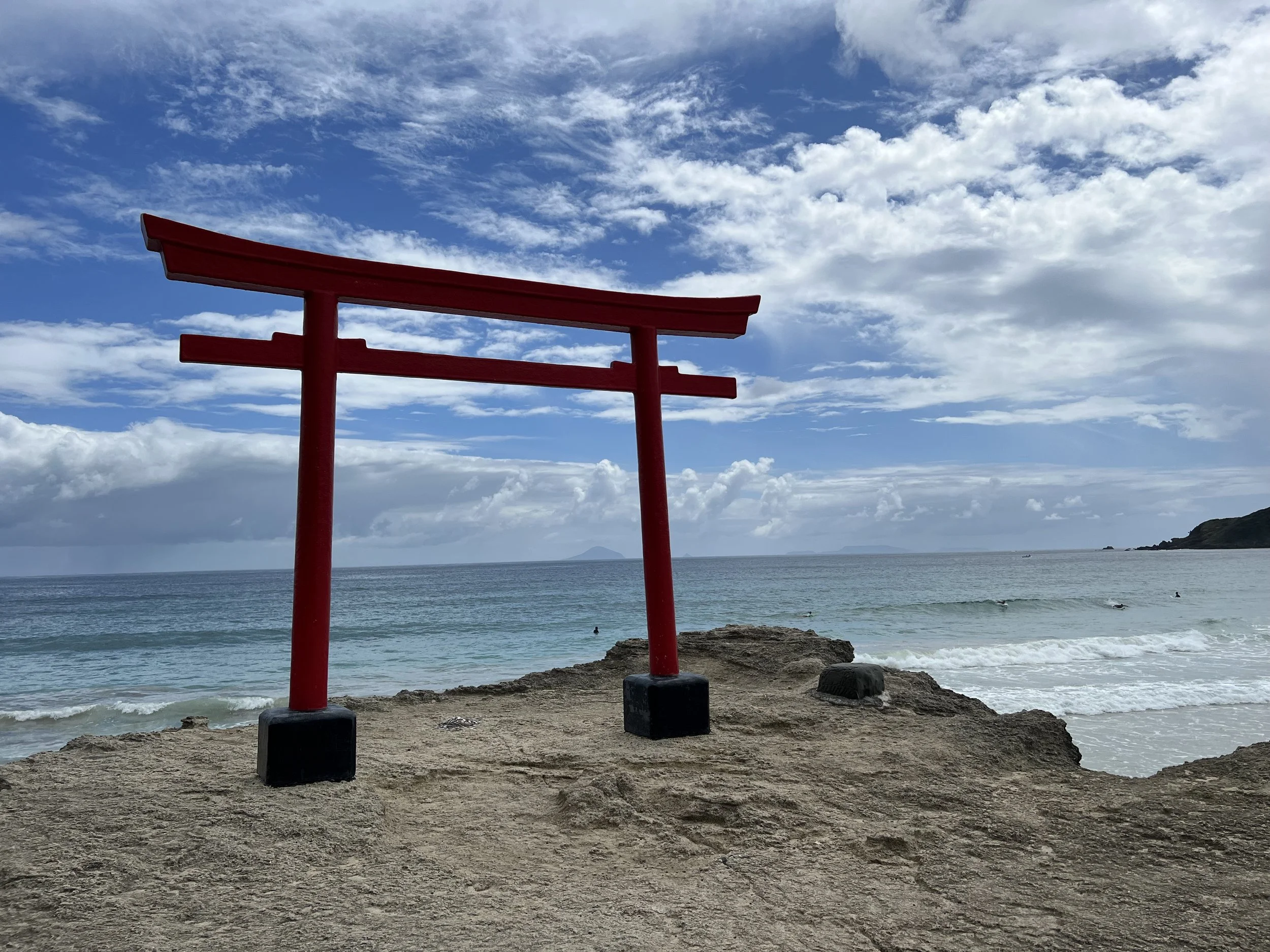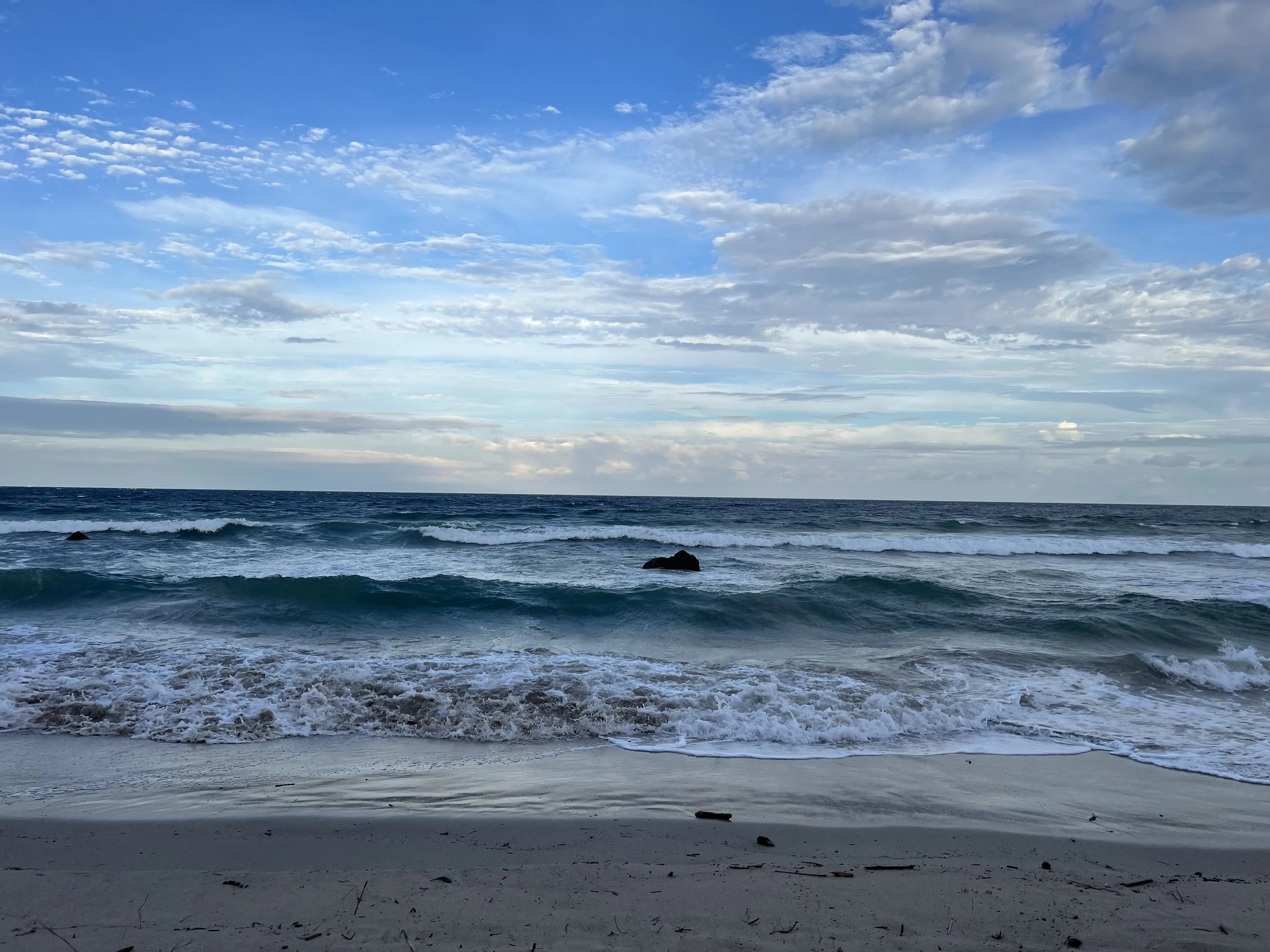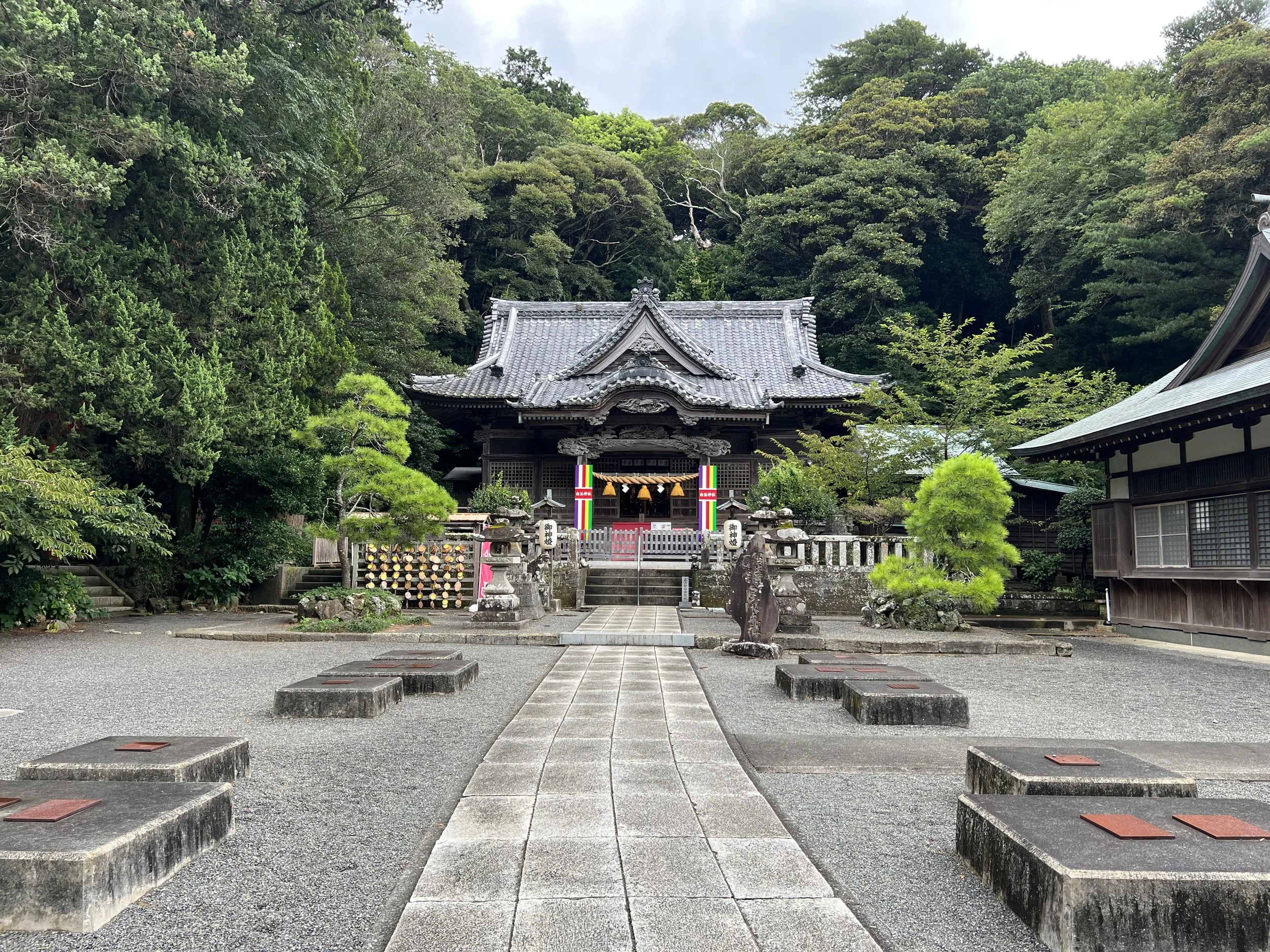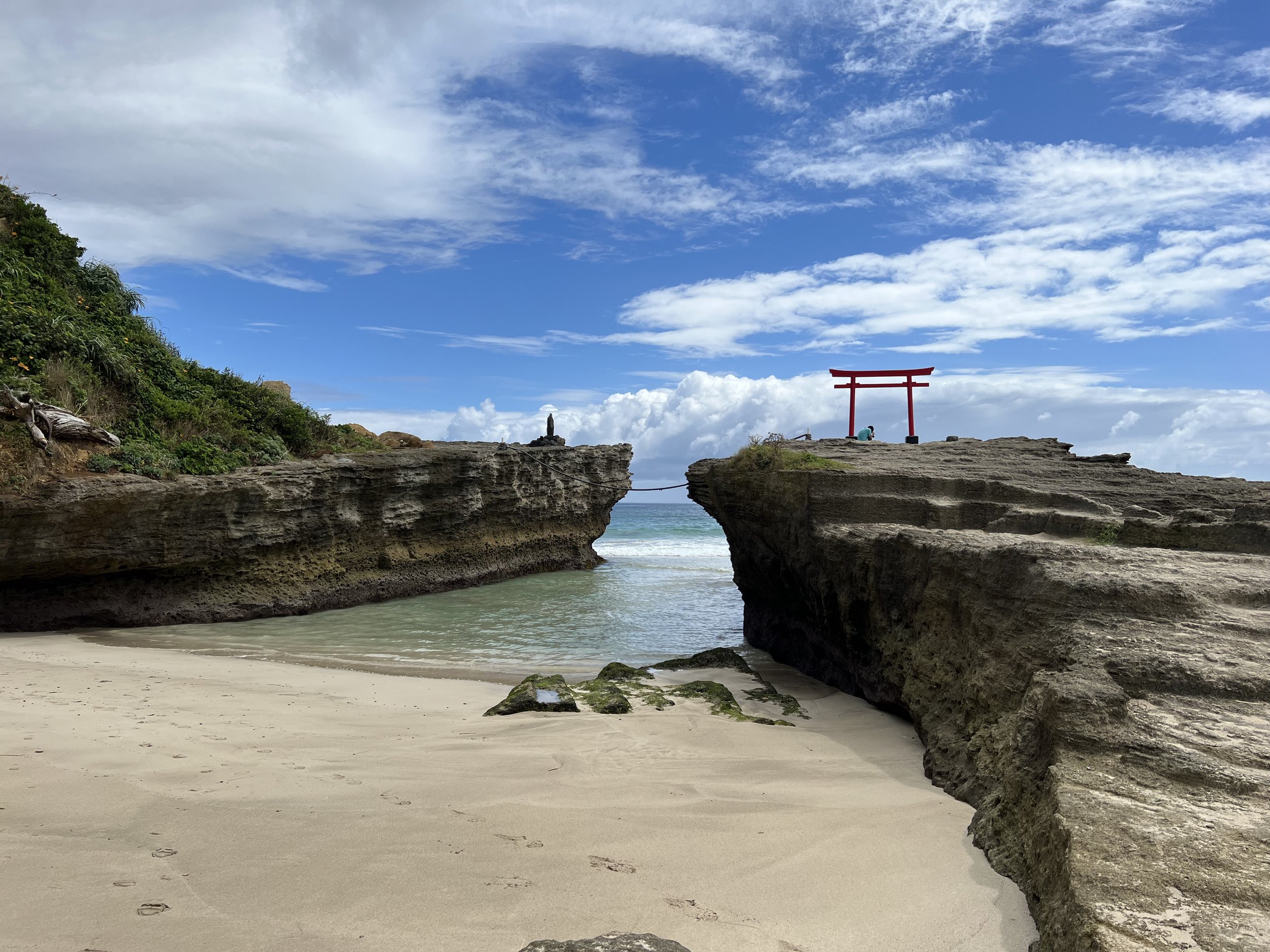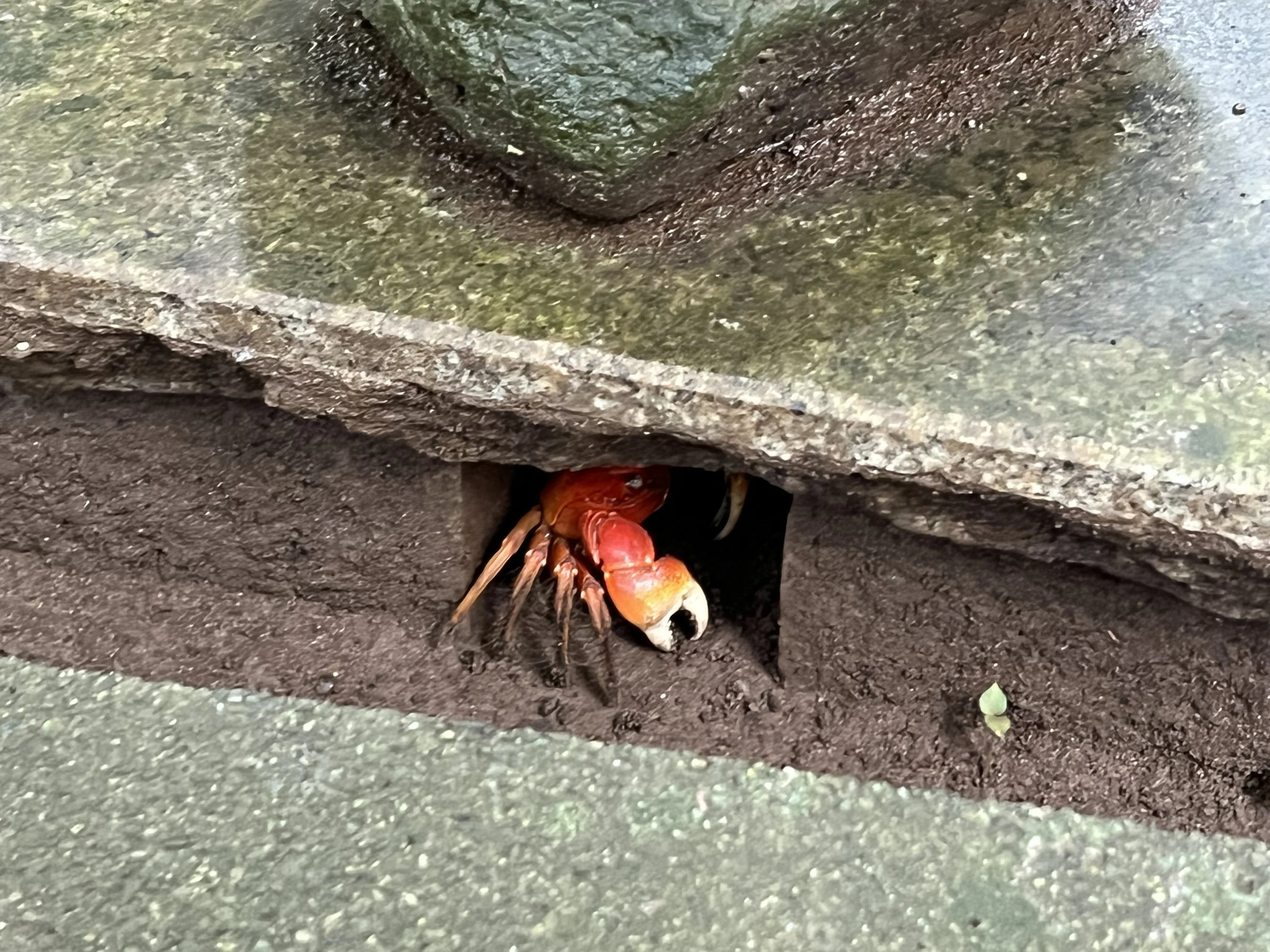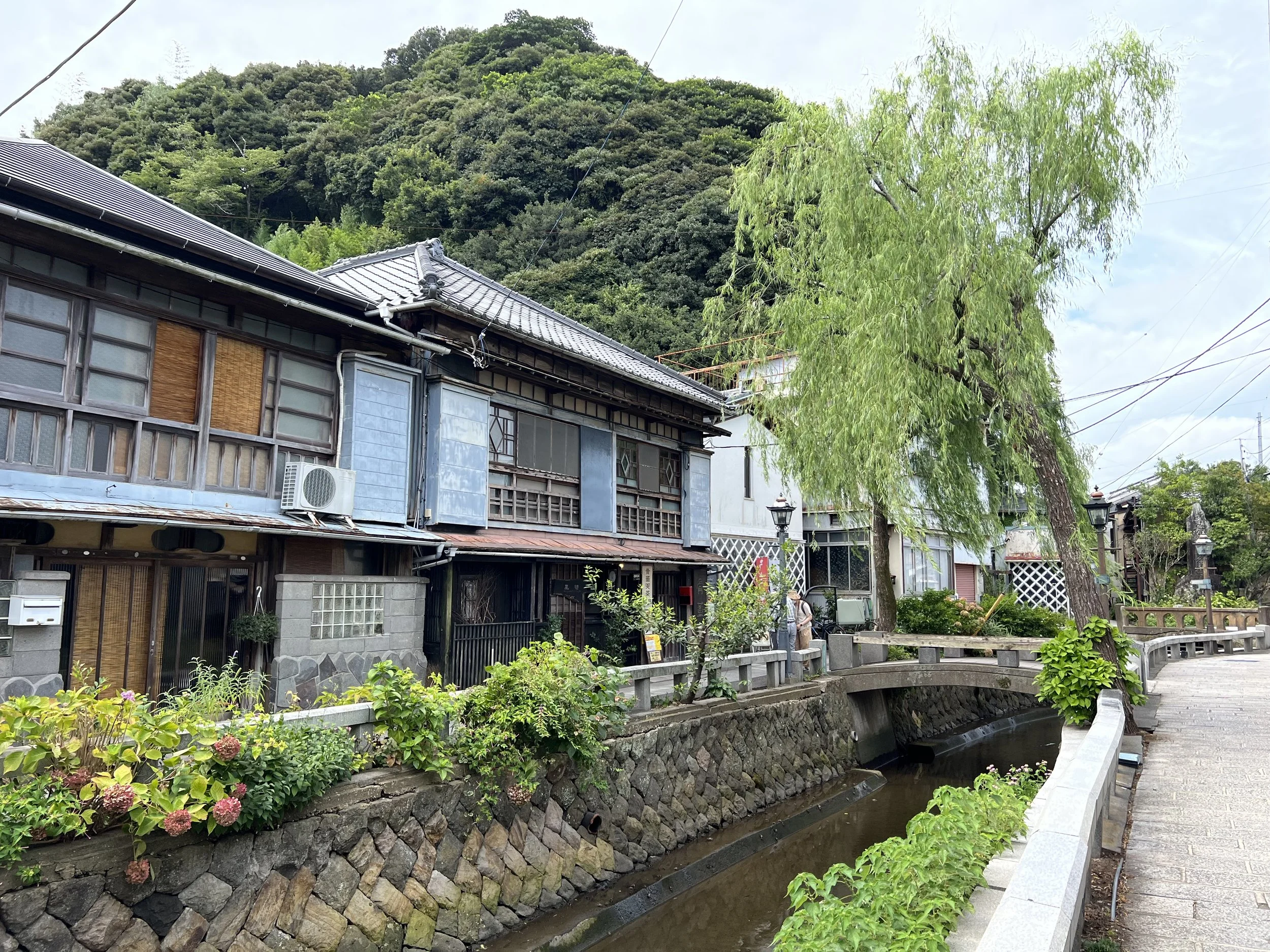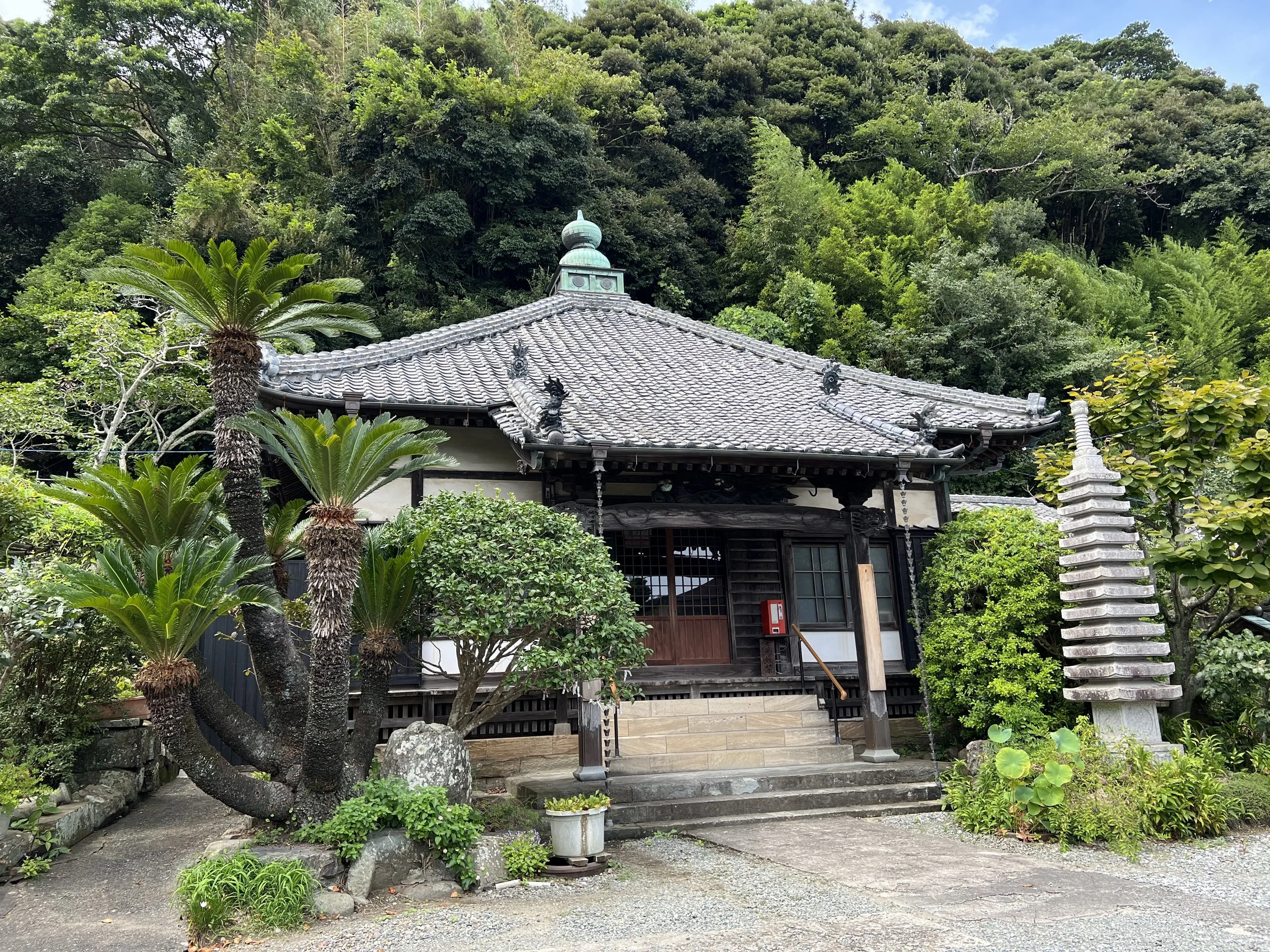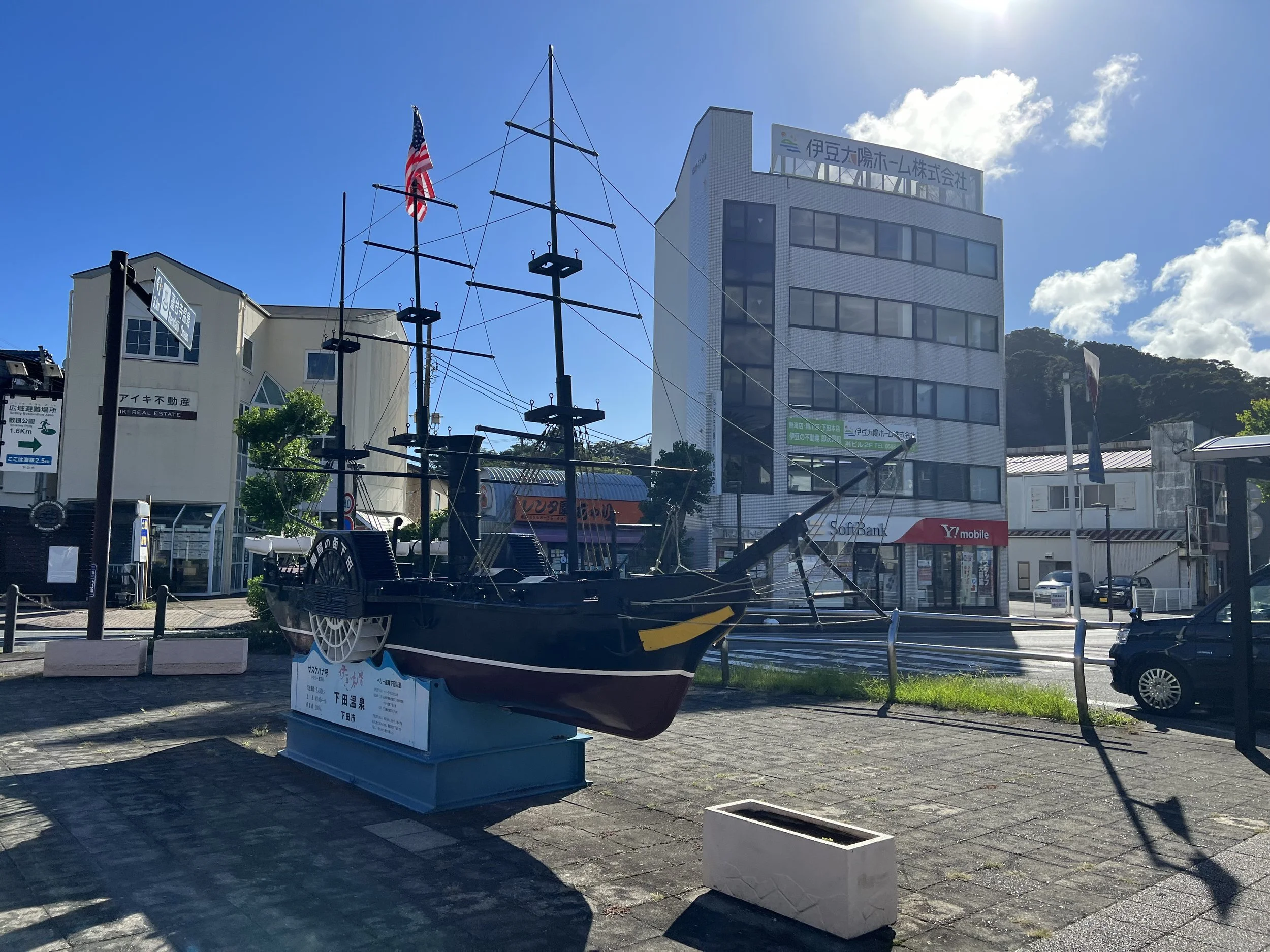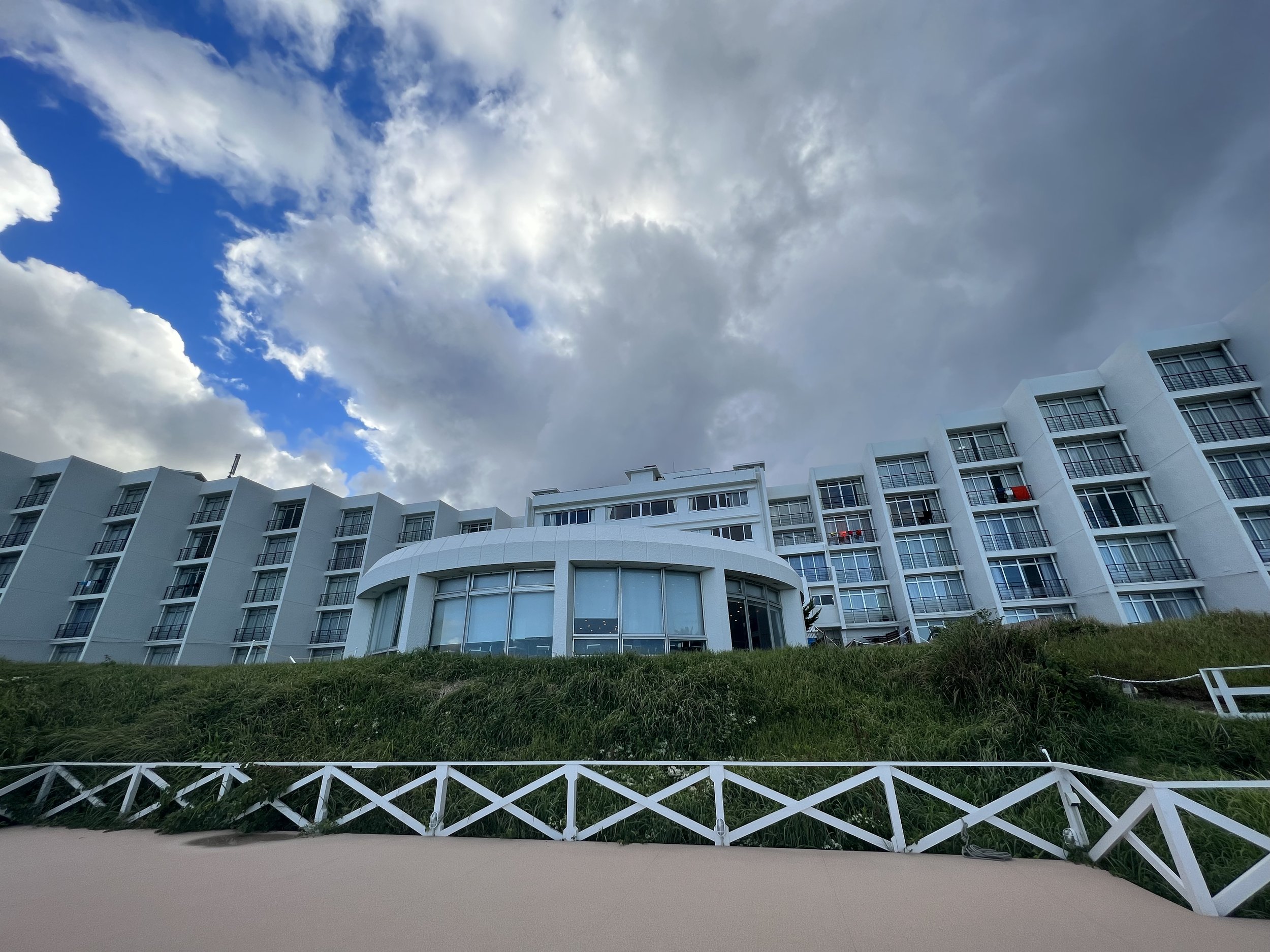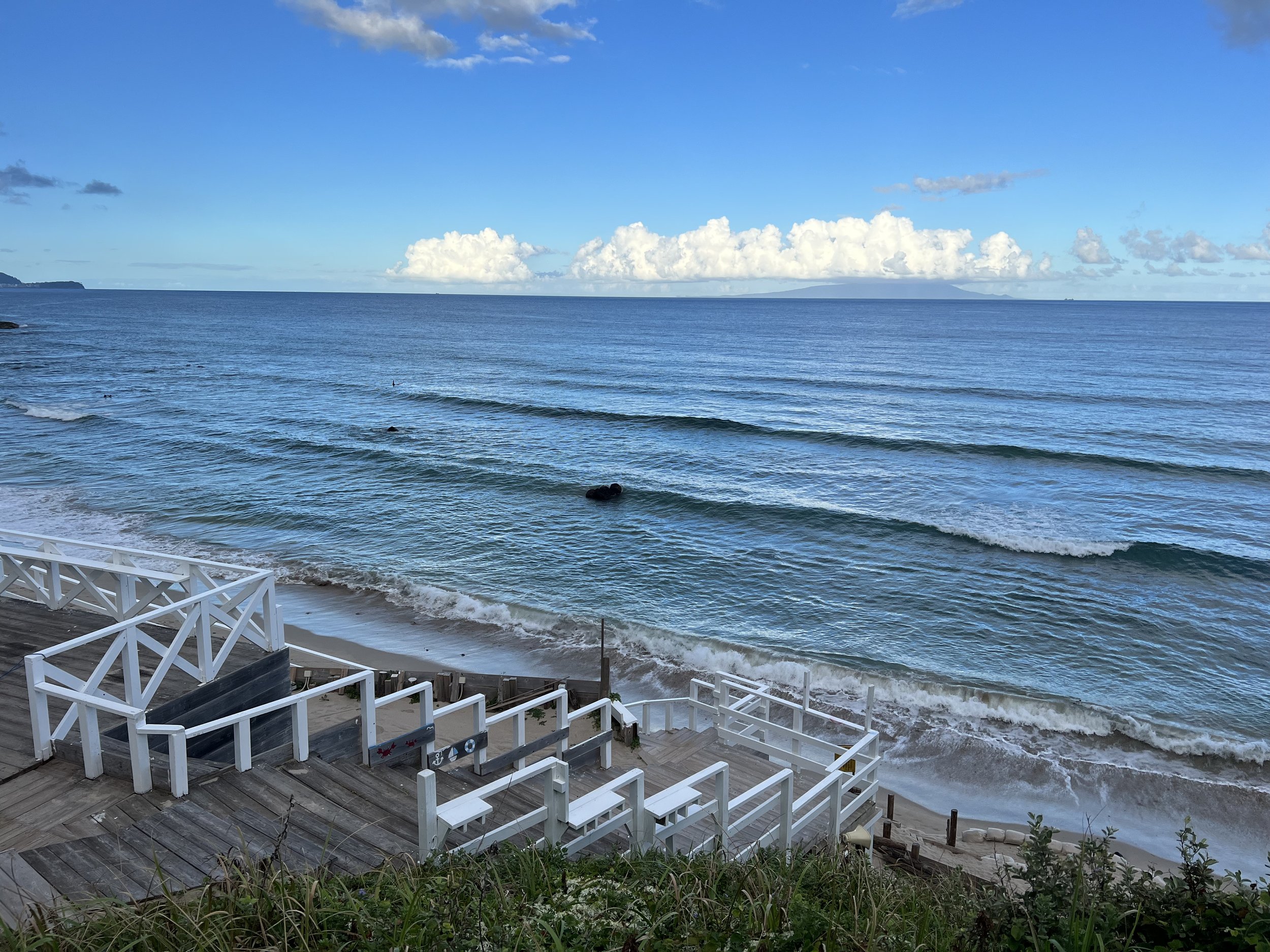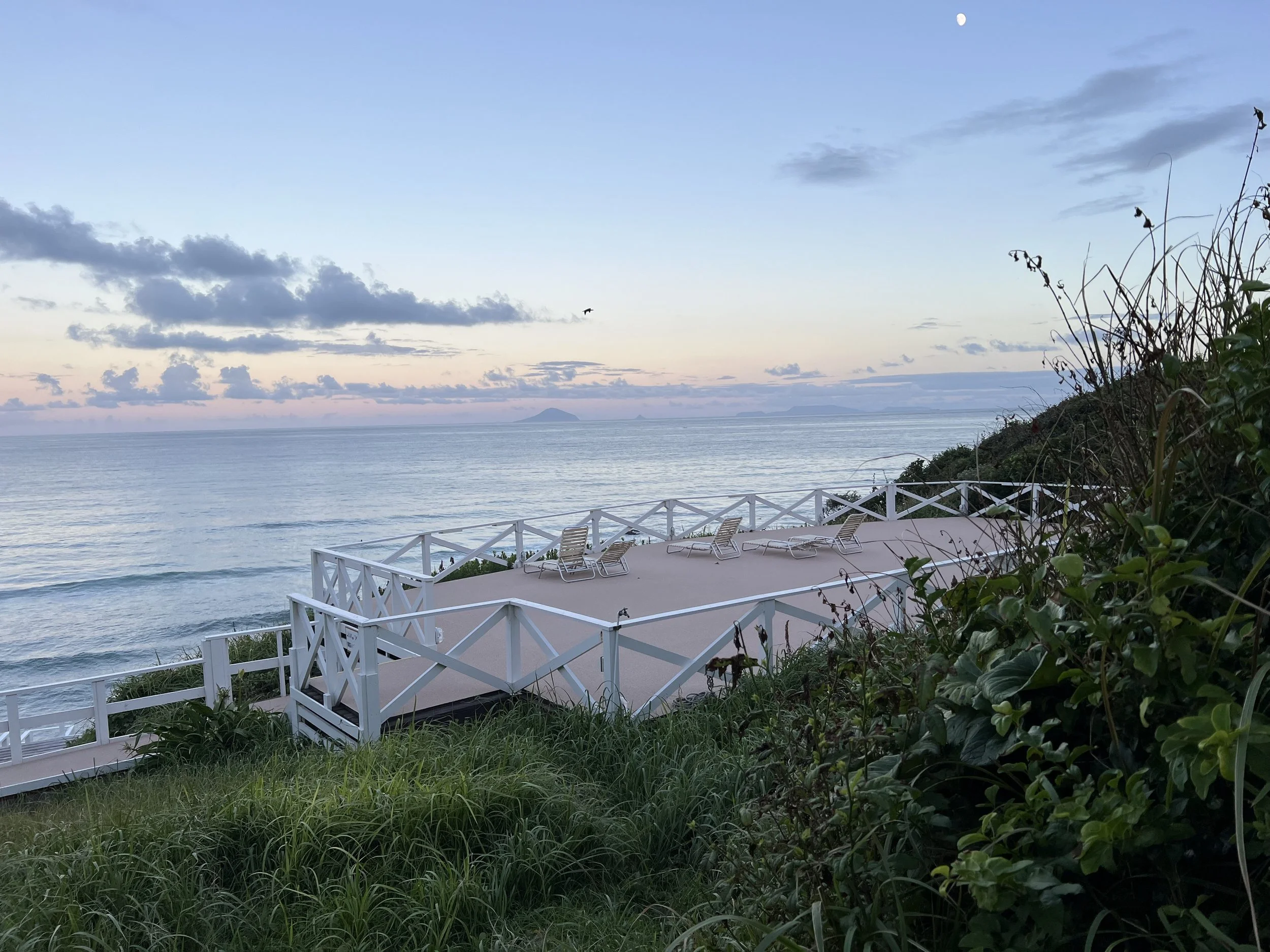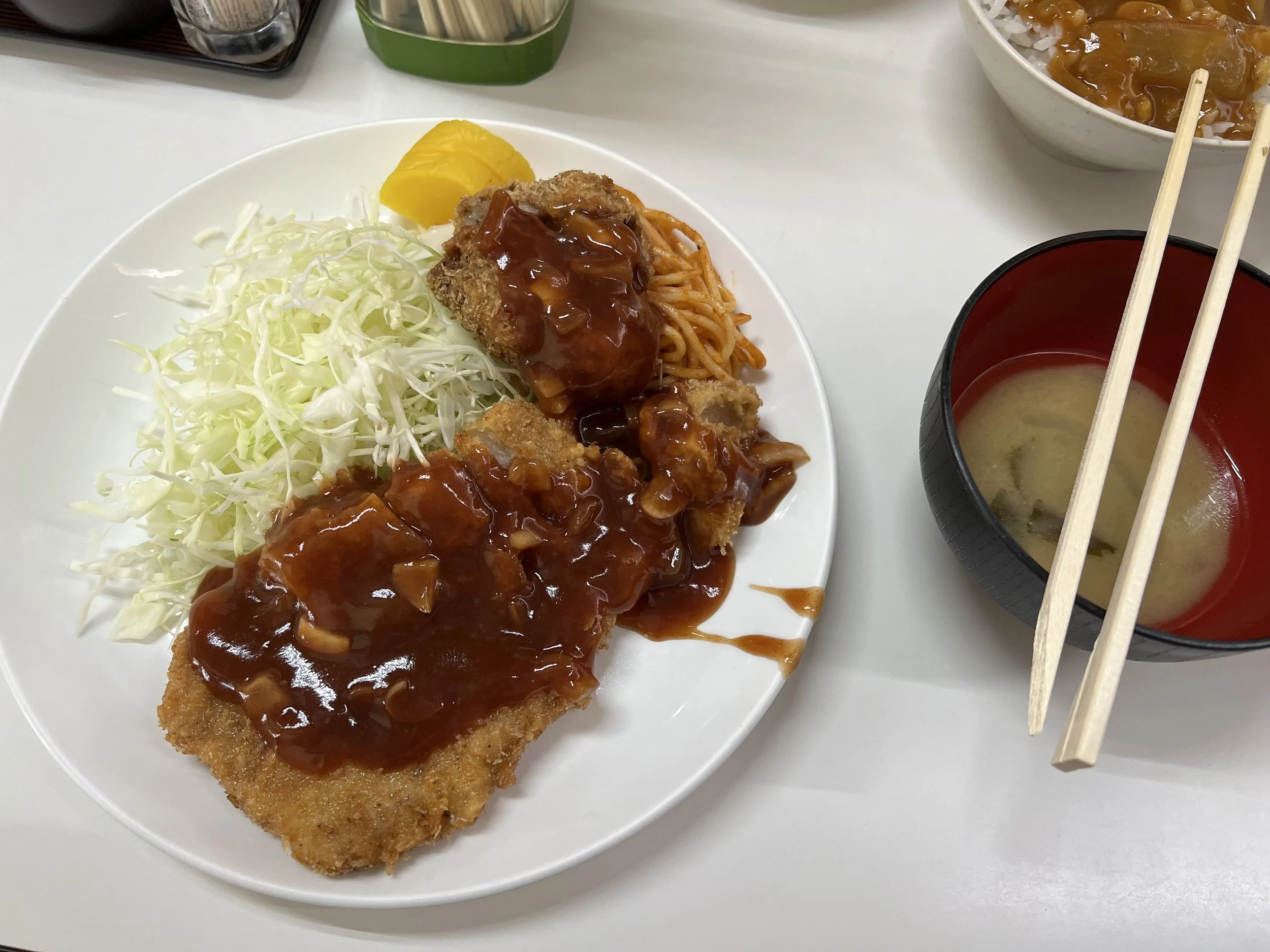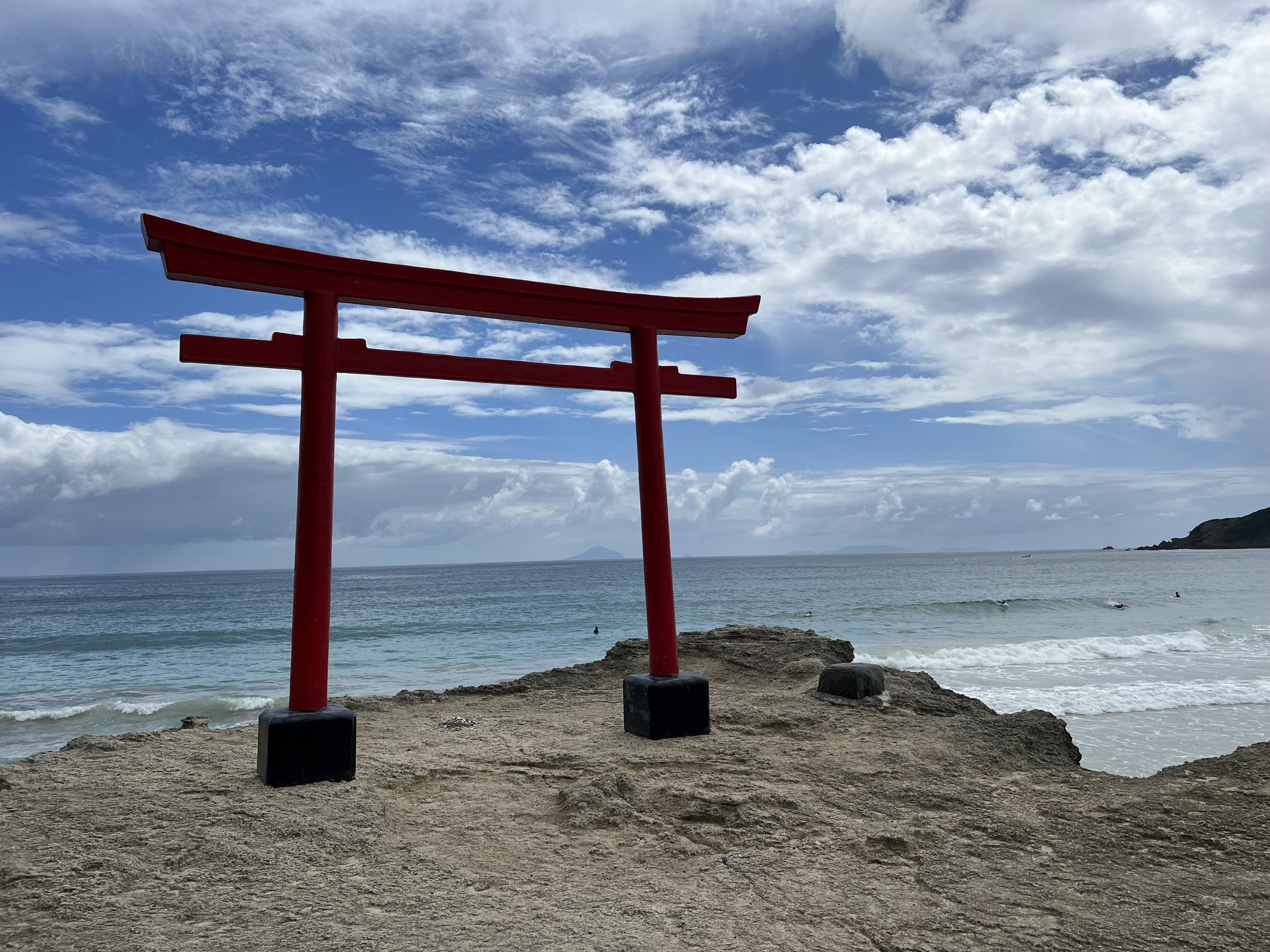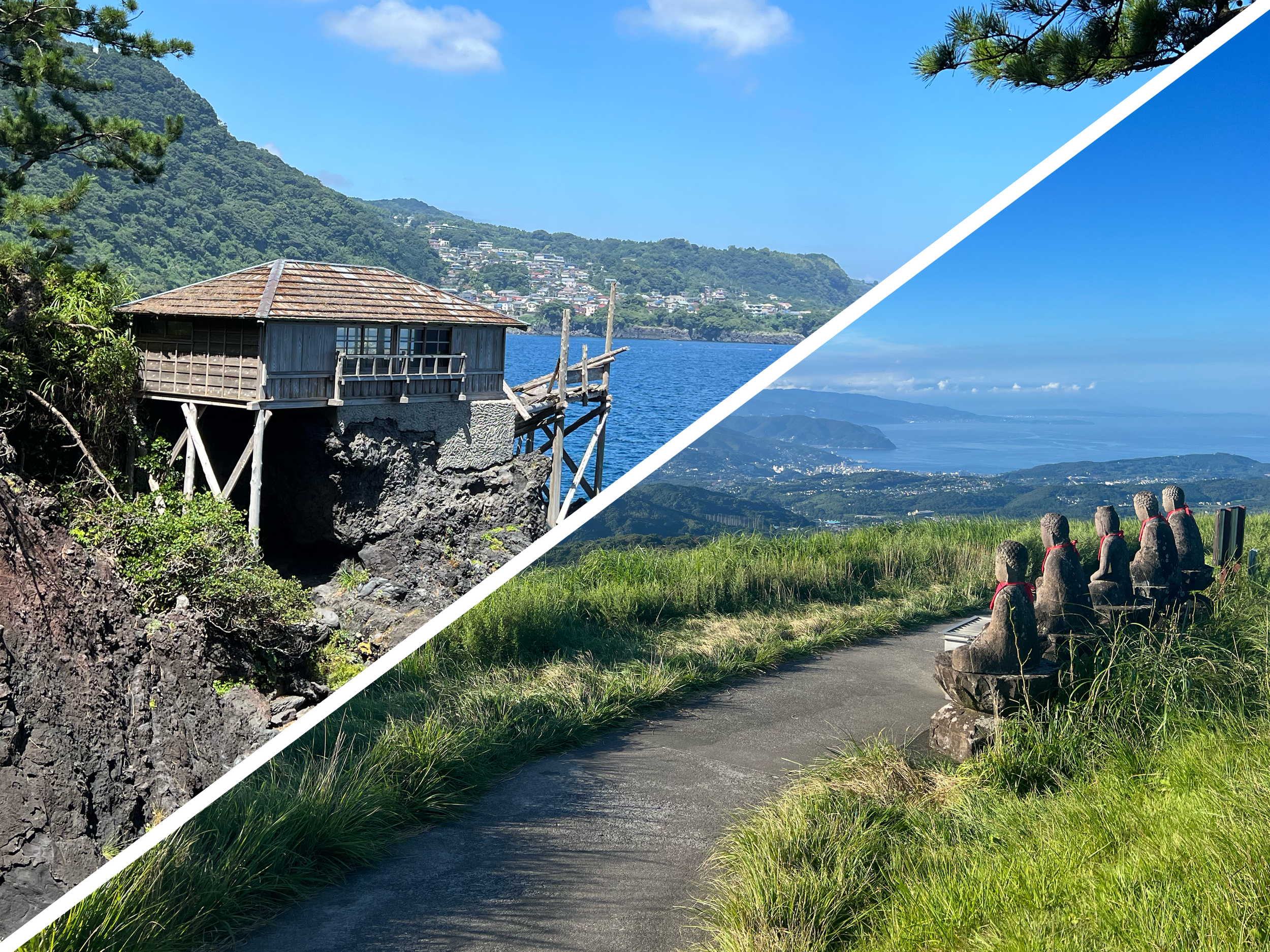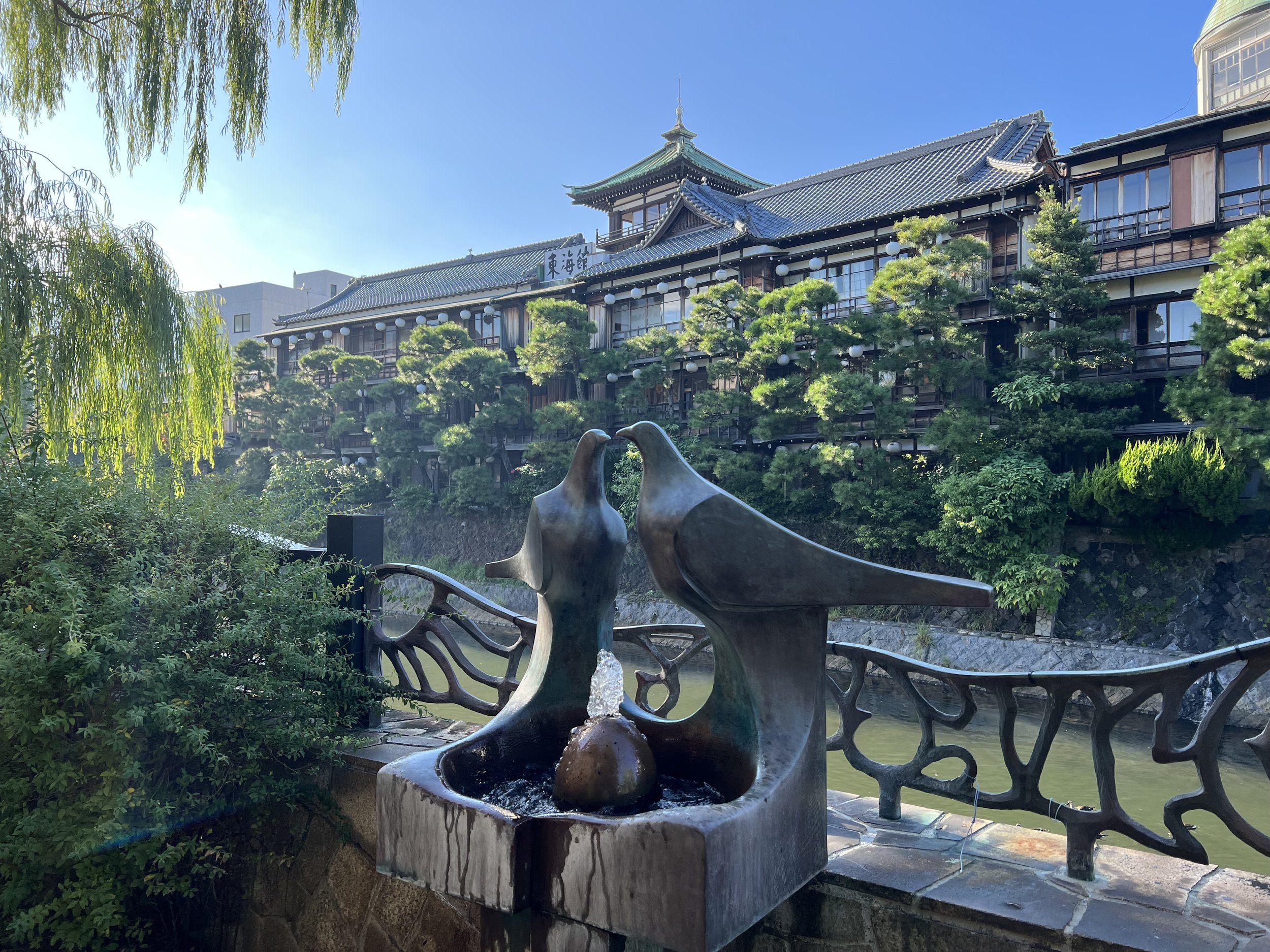Explore Shimoda, Japan: Top Things to Do, Where to Stay and Tips
Looking for a coastal getaway that’s easy to reach from Tokyo? Shimoda (下田) is a historic seaside town on the southeastern tip of the Izu Peninsula, known for its white-sand beaches, hot springs, and seasonal flowers. Shimoda also played a key role in Japan's diplomatic history as the port where Commodore Perry's black ships landed, marking the country's opening to the West.
I visited Shimoda for three days during a one-week trip around the Izu Peninsula. After stops in Ito and Kawazu which were more about nature and hiking, I enjoyed my stay in Shimoda as a more relaxing seaside holiday, although there's plenty more to do if you want to explore. In this travel guide, I’ll share how to get to Shimoda, the best things to see and do, where to stay and eat, plus practical tips to make the most of your trip.
How to Get to Shimoda
There are several options for getting to Shimoda from Tokyo:
The quickest way is to take a Shinkansen from Tokyo station to Atami (50 minutes), and transfer to a local train on the JR Ito line (20 minutes) to Ito station then a local train bound for Izukyu-Shimoda station on the Izukyuko Line. The trip costs ¥6,090 and takes under 2 hours and half.
If you prefer a direct option, there is a direct JR Odoriko Limited Express train also departing from Tokyo station every hour allowing you to reach Shimoda in 2 hours and half for ¥10,060.
If you prefer to save money and are not in a hurry, instead of the Shinkansen, you can take a local train on the Ueno-Tokyo Line from Tokyo or Shinagawa station to Atami station and then a local train on the Ito line followed by a local train on the Izukyuko Line. The entire trip takes 3 hours and 40 min but only costs ¥4,000.
Depending on your travel plans, you might be interested in using the JR Pass or JR Tokyo Wide Pass for part of the journey.
Best Things to See and Do in Shimoda
Relax on One of Shimoda's Beaches
Shirahama Beach (白浜大浜海水浴場), located 4km outside of central Shimoda, is a stunning white-sand beach with crystal clear water that is one of the most beautiful on the Izu Peninsula. Popular in summer, it's also a more peaceful escape off-season. Whether you want to surf, swim, or simply soak up the sun, Shirahama Beach is the perfect spot to unwind. I was staying at a hotel with access to Shirahama Central Beach and loved how quiet it was compared to the main Shirahama Beach.
➡️ Planning a seaside vacation in the area? Browse beachside accommodations in Shirahama here.
Beyond Shirahama beach, there are numerous other beaches in the area which can be nice alternatives if you prefer quieter spots or smaller, more intimate beaches, like Tatadohama Beach (多々戸浜海水浴場) or Kujuppama Beach (九十浜海水浴場). You can find a list of Shimoda’s 10 beaches on Shimoda tourism association’s website. And what’s great is that the swimming season can start as early as late May and remains pleasant through September.
Discover Shirahama Shrine, One of Izu’s Power Spots
Shirahama Jinja (伊古奈比咩命神社) is the oldest shrine on the Izu Peninsula, with roots stretching back over 2,400 years. I found the atmosphere of the shrine quite special, and what made the visit truly memorable for me were the unexpected little details such as the tiny crabs scuttling around the mossy grounds, and the striking red torii gate that stands facing the sea.
Enjoy Shimoda’s Port Atmosphere along Okawabata Dori
Okawabata Dori is a seaside road where you can stroll while enjoying the peaceful scenery of colorful boats anchored in the bay. It’s a short walk, but it was an integral part of Shimoda’s charm which I enjoyed photographing.
Dive in Shimoda’s History by Visiting Sites and Monuments Related to Commodore Perry
Perry Road
Shimoda is famous as the landing place of American Commodore Perry’s ‘Black Ships’ in 1853 which is regarded as the start of diplomatic relations between Japan and the USA.You will find references and sightseeing spots related to Perry such as:
Perry Road (ペリーロード): A charming, stone-paved canal street with a few cafes and small boutiques. It’s very small, but it had a cute atmosphere. If you’re looking for a place to rest, you can drop by the Old Sawamura House (旧澤村邸), with its characteristic sea cucumber walls and Izu stone exterior, which dates back from the Taisho area and is today a a free rest facility.
Ryosenji Temple (了仙寺): This temple is where the Japan–US Treaty of Peace and Amity, also called the Convention of Kanagawa, was signed between Japan and the U.S. Signed under threat of force, this treaty led to the end of Japan's 220-year-old policy of national seclusion (called sakoku) by opening the ports of Shimoda and Hakodate to American ships.
MoBS Kurofune Museum (MoBS 黒船ミュージアム), located next to Ryosenji Temple, with a collection of paintings, maps, and other artifacts related to the landing of the Black Ships. I didn’t get to visit it as I was in the area on a Wednesday (weekly closing day), but I thought it could be interesting.
Ryosenji Temple
Take a Stroll in Shimoda Park and Admire the Best View of Shimoda
Shimoda Park (下田公園), also called Shiroyama Park, is a scenic park over a hill with little shrines, historic monuments and observatories overlooking the bay and ocean. It’s also home to over 1,000 hydrangea bushes that bloom in early summer, turning the park into a sea of purple and blue (I visited in September so didn’t get the chance to admire the park during the hydrangea season, but I’d love to go again for this occasion). Even outside hydrangea season, it’s worth visiting for the peaceful trails and stunning ocean panoramas.
➡️ Interested in hydrangea spots around Tokyo? Check out all my hydrangea articles in Japan.
Ride the Shimoda Ropeway to Mt. Nesugata
The Shimoda Ropeway takes you to Mount Nesugata’s summit, offering sweeping views of the city, harbor, and coastline. At the top, you’ll also find a small temple and tranquil walking paths. The ropeway is open from 8:45am to 5:00pm (to 4:45 from mid-October to mid-March) and the round trip ticket costs ¥1500. For more information, you can check the ropeway website here.
Looking for More Things to Do Nearby?
Here are a few places I've noted but haven't had a chance to visit, but which might be of interest to you:
Tsumekizaki Cape (爪木崎), known for its annual daffodil festival from late December to late January and beautiful views of the Pacific.
Ryugu Sea Cave (龍宮窟), a unique geological formation that seems to be heart-shaped when seen from above.
Both are accessible by public bus, but buses are not very frequent. If you want to explore more of the southern and western parts of the Izu peninsula, it's best to rent a car and explore the surrounding area on your own.
A Few Travel Tips to Make the Most of Your Time in Shimoda
When to Visit Shimoda and How Long to Stay
Shimoda can be a year-round destination, the highlights being summer for the beach, but also June for the hydrangeas, or winter for the daffodil festival. I recommend staying 2 or 3 days to enjoy the city and surrounding nature at a relaxed pace.
Where to Stay in Shimoda
There are several hotels and ryokans in Shimoda to suit all budgets.
In my case, I stayed at the Shimoda Prince Hotel in Shirahama area. Despite booking my holiday last-minute, I found that it was a great value-for-money in the area. While the hotel definitely shows its age, like many Japanese resort hotels from the bubble era, it still offered a genuinely enjoyable stay. The room was spacious, with big windows overlooking the ocean, and the on-site hot spring bath was the perfect way to unwind after a day of exploring. The hot spring bath is actually a panoramic bath overlooking the Pacific Ocean, and one day I decided to get up early to see the sunrise over the ocean from the bath and it remains a great memory. The hotel also offers a shuttle service from and to Shimoda-Izukyu station which was also convenient.
The biggest highlight for me? Direct access to the Shirahama central beach, which made early morning walks and sunset views feel extra special. If you don’t mind the retro vibe in exchange for great views and solid amenities at an affordable price, this hotel is worth considering.
➡️ Check availability and prices for Shimoda Prince Hotel on Booking.com or compare price on Expedia.
Looking for More Resort-style Stays in Shimoda?
If you’re after ocean views and a relaxing hotel atmosphere, there are several great alternatives to consider. The Shimoda Tokyu Hotel (下田東急ホテル) is a long-time favorite for its elegant coastal setting, on-site hot springs, and spacious rooms with sweeping sea views. For something a bit more casual, Hotel Izukyu (ホテル伊豆急) is just steps from Shirahama Beach and offers a seasonal pool, ocean-view rooms, and a laid-back vibe. Another hidden gem is Ocean View Hiromi SPA Resort, newly renovated, with some rooms featuring private open-air baths with views of the Pacific, perfect for a romantic, more secluded escape.
➡️ Compare availability and prices for Shimoda’s top accommodations on Agoda or Booking.com.
Where To Eat in Shimoda
A local restaurant I’d recommend without hesitation for tonkatsu lovers and travelers with a big appetite is Tonkatsu Hajime. Portions are huge, and refill of cabbage, miso soup, rice and spaghetti is free. I remembered like yesterday how tasty the tonkatsu was, and how nice the owner was as he regularly regularly asked us in Japanese if we liked our meal and if we’d like more.
Otherwise, you can find a number of seafood restaurants, with kinmedai fish being a local specialty as Shimoda Port is known as having Japan's best catch rate for this fish.
✨ TRAVELY TIP: If, like me, you're planning to visit Shimoda outside the high season, be aware that it may be a little difficult to find restaurants open in the evening, as they often close early and opening times are often different from those shown on Google maps.
How to Get Around Shimoda
The main tourist attractions in Shimoda, like Perry Road, Shimoda Ropeway and Shimoda Park, can be accessed by foot. Public buses can also get you to further destinations like Shirahama Beach or Ryugu Cave, but note that they are not frequent and you will need to plan your transfers in advance.
Bicycles can also be rented from Izukyu-Shimoda station, providing another great way of getting around most of the city. Some hotels also offer rental bicycles or make bicycles available to their guests.
If you plan to venture out to the coast, it is best accessed via car and if you prefer flexibility, rental cars are available from Shimoda Station with rental companies like Toyota Rent a Car, or from other cities on the Izu Peninsua like Ito, or Atami. ➡️ Compare car rental deals here.
Final Thoughts on Shimoda
Whether you're drawn by its beaches, its place in history, or its laid-back charm, Shimoda is a nice destination to consider if you’re planning to explore the Izu Peninsula. I hope this guide helps you plan a memorable trip!
If you're planning to explore more of Izu, check out my other articles on the peninsula for detailed travel tips and itinerary ideas:
A Nature Day Trip to Izu: Jogasaki Coast and Mount Omuro Itinerary
Kawazu Seven Falls: A Nature Lover’s Hidden Gem on the Izu Peninsula
Found this article helpful? Buy me a coffee. 😊
Want to stay in touch? Subscribe to my monthly newsletter (with latest articles, updates, travel tips and more...) delivered straight to your inbox. 📩
Some of the links in this Shimoda Guide are affiliate links. At no extra cost to you, I may earn a small commission when you click on them and make a purchase. And if you do, thanks for your support! Purchasing through these links is a great way to support Travely Notes, as this helps with the costs of running my blog.

